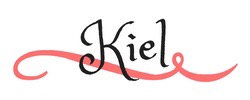Welcome to Part 2 of my Homeschool Basics series, “How We Homeschool.” If you missed Part 1, “Why We Homeschool,” you can go back and read that post now, then head on back here when you are finished!


I cannot tell you how many times I tried to start writing this post. The theme seemed simple enough. I just wanted to write about what style or method we are currently using in our homeschool. But for some reason I kept trying to come at it from the angle of retelling our journey and how we got where we are today, and that was just not working. But I still do want to tell that story, just some other time. So, without further ado, let’s dive in to how our family is home educating!
We are human beings, persons, created to live. To have life more abundantly. Wonder together; grow together. Together share the struggles of knowing we cannot perfectly follow God’s law. We are fellow pilgrims. We walk side by side as human beings under the love and authority of Him who made us.
~Susan Schaeffer Macaulay, For the Children’s Sake
If you are familiar with the book For the Children’s Sake, you may have already guessed our preferred approach to homeschool. In it, Susan Schaeffer Macaulay discusses her own family’s journey to finding the Charlotte Mason method of education for their children. And that is the method we have chosen as well. If you have not heard of Charlotte Mason before, she was a British educator, teacher trainer, and author in the late 1800s and early 1900s. Miss Mason looked at the trends of the education system at the time and felt that they were not truly meeting the needs or the abilities of student, nor their God-given human nature. So she set out to craft a philosophy and methods based on both classical and modern insights. She then trained parents and teachers to use these ideas and methods with the children under their own tutelage. With the advent of the internet, Charlotte Mason’s own writing as well as several curricula are now readily available to today’s homeschool families as well!
What I love about Charlotte Mason education:
- The emphasis on valuing the relationships and persons in the home classroom, not just the academic material.
- The basis of texts called “living books” and hands on materials forming the curriculum rather than textbooks or workbooks.
- The centrality of the fine arts (music, visual arts, poetry and plays) as parts of the curriculum rather than extra-curriculars.
- The importance of nature study and time outdoors observing and interacting with creation as a foundation for the sciences.
- The foundation in biblical Christian principles (although there are many secular CM-style homeschoolers out there, as well!)
Miss Mason’s ideas were both rooted in her understanding of classical education from the Greeks and Romans to Medieval times, as well as forward thinking using the latest theories in child development. When I look at the list above, it makes me chuckle because Mason was a huge proponent of a “multi-sensory” approach to learning before that was even a buzzword!
If you are interested in learning more about the Charlotte Mason method and her philosophy of education, there are a few great online resources you should check out.
- AmblesideOnline.org: This fabulous (and free!) website has not only the full text of Mason’s 6 volumes (her books on education) available to read online, as well as modern paraphrases of each, but also a vast number of articles published by her magazine “The Parents Review.” Even more than that, AmblesideOnline has a complete curriculum for FREE online! This is the curriculum we have been using over the past year, and I absolutely love it. Another great resource is the AmblesideOnline forum, where you can ask questions and have discussions with other AO parents, including the amazing women who created the curriculum in the first place. I really cannot say enough good things about AO!
- Charlotte Mason Institute: CMI seeks to promote education about Charlotte Mason and her principles to people all over the world. They host conference and retreats, have an informational blog and also have a new curriculum for sale. Although I personally have not used many resources offered by CMI, I know many homeschool families find it to be a help.
- Simply Charlotte Mason: Another great place to find not only information about Charlotte Mason education, but also curriculum for sale, as well as a discussion forum for parents using their curriculum.
- Charlotte Mason in Community: This is a little different than the previous 3 resources in that it is no much a place to get information, but rather a place to find other CM families in your local area. Whether you are looking for a nature group, book study group, or just a group to get together and chat with while your kids play at the park, this is one of the first place to check and see if there is a CM community established near you!
Those are just the beginning of the wealth of knowledge that is out there for those of us trying to incorporate Mason’s principles into our homes and lives. Sometime I will probably write a post including my favorite podcasts, blogs and other places online to get inspiration for a classical, living books education at home. But I think that will be all for today.
Thanks for joining me here at Tuning Hearts today! See you back here again next week for Part 3 of our Homeschool Basics Series all about how we schedule our year. In the mean time, I would love to hear from you about what style of homeschooling you follow!
P.S.–There are now a couple of new printings of Miss Mason’s original volumes available for purchase! One is from Simply Charlotte Mason, and the other is available via Amazon, reprinted by Living Books Press.
Read the next post in this series, Year-Round Schooling, here.

